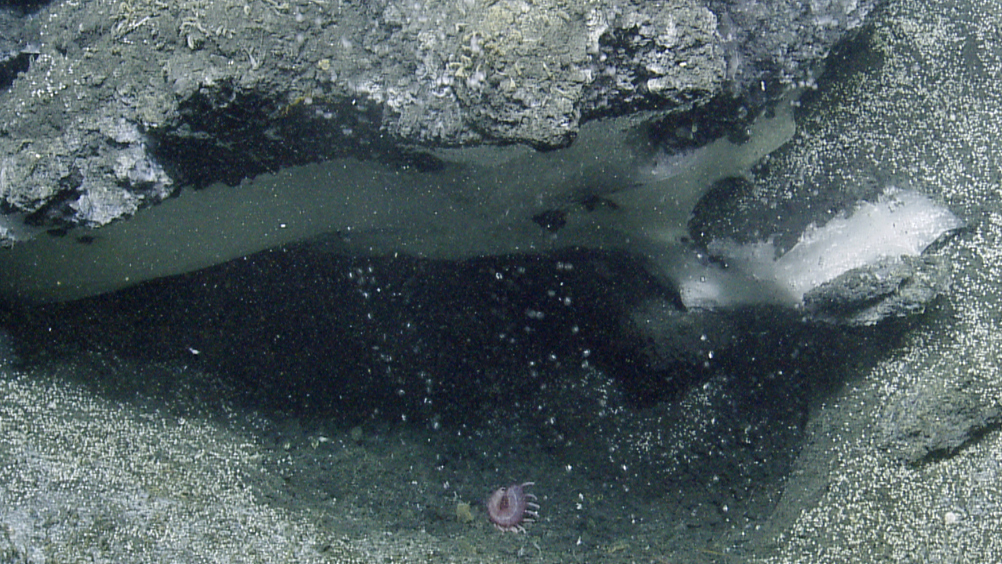Researchers from the US National Oceanic and Atmospheric Administration (NOAA) working at Oregon State University have successfully used a hydrophone to record the sound of methane bubbling up from the sea floor off the Pacific Northwest coast. This technique, they claim, will help them to identify and quantify methane originating from the seabed.

In the journal Deep Sea Research II, the team led by acoustic scientist Robert Dziak explain how they used the remotely operated vehicle (ROV) Hercules, operated by NOAA exploration vessel Nautilus, to dangle a hydrophone almost 1.5km deep of the continental shelf near Heceta bank to investigate a stream of bubbles that had been detected emanating from the seafloor. The hydrophone recorded a series of short, high frequency bursts, lasting 2-3 seconds.

The researchers then compared this acoustic signature with images obtained by the Hercules and confirmed that the sounds coincided exactly with rising bubbles. "The bubbles in the streams make sound, and the frequency of the sound is related to the size of the bubble," Dziak said. “The smaller the bubble, the higher the pitch. And the larger the bubble, the lower the sound pitch, but the more methane it contains.”
According to Dziak, the ultimate goal of the research is to quantify the volume and rate of subsea methane emerging from the sea floor. The gas is found as an icy solid hydrate deposit in subsea rocks, and also in the gas phase in sediments on the continental margins around the world. Methane is a highly potent greenhouse gas – even more so than carbon dioxide – but the amounts emanating from the sea from these natural deposits have never been quantified. Moreover, some believe that these deposits could form a new source of energy if they could be traced, quantified and harvested. There is currently no way to determine how much methane might be stored in these reservoirs, but Dziak hopes that his research might help to rectify this.
This month, a new project led by OSU researchers Tamara Baumberger and Susan Merlewill use the Nautilus to map additional subsea methane seeps off the Oregon coast, and Dziak and OSU researcher Haru Matsumoto will deploy their hydrophone system into these sites in the Astoria Canyon and collect acoustic data over 2 to 3 days. "The frequencies are so high on some of these recordings that the data drive fills up quickly on battery-operated hydrophones," Dziak said, " "However, this new experiment will record for a longer time period, allowing us to see how seafloor methane emissions vary over time, and how they may be influenced by the ocean tides." The expedition will be broadcast live on the Nautilus website.











Arriva makes £300m tri-mode train order with Hitachi Rail
This development shows up the lack of a comprehensive nationwide network of electrified lines for passenger services and freight The glacial speed of...